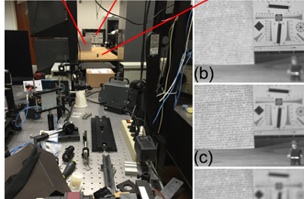Add this one to the “coming some day, but likely not very soon” file. Researchers at Duke have found a way to modify a 2D camera so that it can gather 3D depth information with a single exposure.
Most 3D solutions that use a consumer-grade camera include multiple lenses for a parallax effect, or require you to take multiple photos from multiple vantages. These solutions rely on the difference in angle between the photos to gather 3D data.
The solution developed by the Duke researchers have instead made a few hardware modifications to a camera, as well as a few upgrades to its processing capacity. Nothing that couldn’t be incorporated into a consumer-grade camera with a little bit of tinkering on the part of the hardware manufacturer.
Some benefits are obvious—this system requires less data than systems that use multiple photographs, it uses fewer lenses, it works faster, it’s less expensive, and so on.
So, how does it work?
As Photonics.com explains, the researchers programmed the 2D camera “to perform three functions simultaneously: sweeping through the focus range with the sensor, collecting light over a set period of time in a process called integration, and activating the stabilization module.”
The camera uses the optical stabilization to “wobble” the lens around a fixed point. That information is combined with information about each object’s focal distance. “The images that otherwise would have been acquired at various focal settings are directly encoded into this measurement based on where they reside in the depth of field. This effectively creates a depth map that describes the focus position of each pixel in the image.”
Voila—You have a depth map that you can merge with the 2D image to create a 3D model using a simple 3D engine.
The big question is, how accurate is this method? Well, the researchers haven’t actually released that information. It’s not surprising if consider that their paper on the research reads more like a proof-of-concept that anything else.
They’ve only proven that it’s possible, whether it actually comes to be useful within the 3D imaging space still remains to be seen.
Found at: Photonics.com






